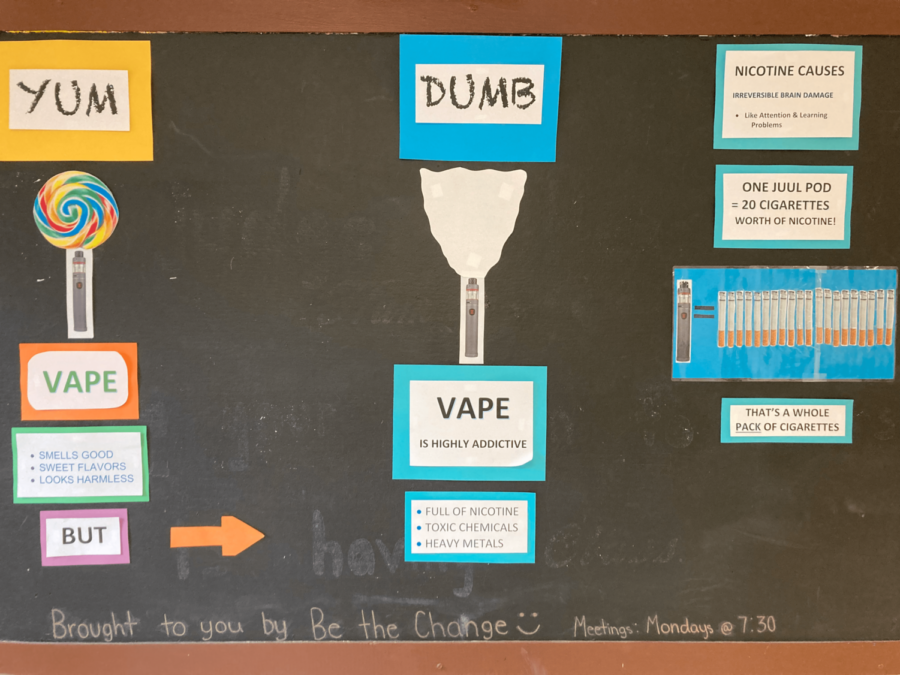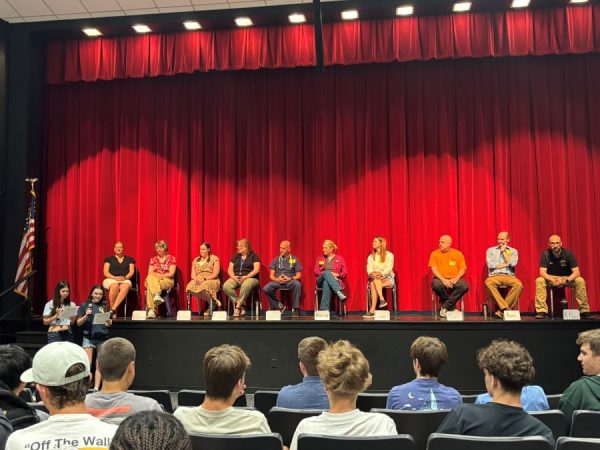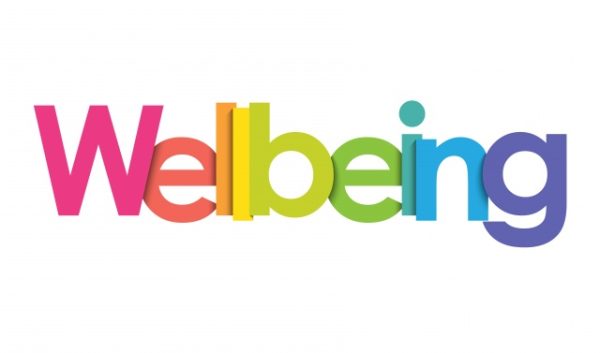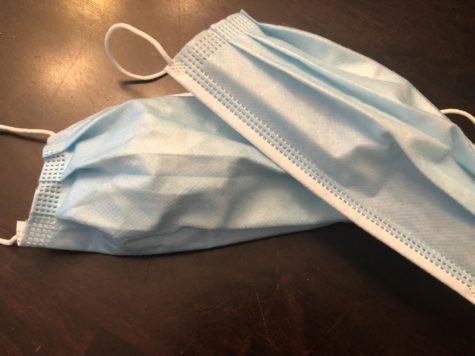The Vulgarity of the Vaping Issue
Vaping diagram posted on bulletin board at GHS. Created by Shannon Hebert
Piña colada and strawberry scents wash over me as I enter the girl’s restroom. It’s a pleasant smell with a dreadful denotation — I know that the people in here before me were most likely not spraying perfume. Again, as I walk down the 200 wing hallway to leave school, I walk by the faint smell of fruit that lingers around a group of hunched-over students. “I can give you this one, but it’s more expensive.”
The vaping issue at our school has grown significantly over the past few years. According to GHS’s Youth Risk Behavior Survey Report from 2019, 52% of students have reported using an electronic vapor product at least once. The number of students who had used a vape within the past 30 days was roughly 37.4%, or more specifically, 421 of the 1,083 students surveyed at GHS.
Student Resource Officer Matthew Pelletier knew prior to working at GHS that vaping was an issue statewide. However, since assuming his newest position, he’s seen the drastic effect that vaping has had on Goffstown. “I knew it moved away from cigarettes, and vapes are the ‘new thing’; I assumed it would be about the same as far as how often it happens,” says Pelletier. “Now I know that it’s a lot worse. It’s very scary how prevalent it is.”
Officer Pelletier has responded to 15–20 vaping incidents during just this school year alone. Pelletier explains the process as such: a teacher finds a student vaping in the bathroom, and brings the student to the main office. Officer Pelletier is called down, takes possession of the vape, which becomes evidence, and the student is given a court date. The student is expected to be present in court on time. Due to the school’s zero-tolerance vaping policy, the student could also be suspended for 1-10 days.
“Tobacco use and possession is one of eight categories of charges where you don’t get the kid gloves — you get treated like an adult.” The parents of the guilty party are called, the student in question is expected to be at court on their assigned date, and they have to explain to the judge what happened. The fine is typically $124, but, as Officer Pelletier states, it’s more serious than students think: “More importantly, that’s going to go on your permanent record. It’s not a handcuffs arrest, it’s called a summons.”
The high school’s average vape usage percentages are higher than the entire state’s percentage of 33.8%. Teachers and GHS administrative staff fear that when the survey is conducted once more on December 15th, 2021, our vape usage rates will drastically increase.
A student during the 2020-2021 hybrid school year was reported by Officer Pelletier to leave class at least every 45 minutes on average to go to the bathroom. The reasoning? The extreme addictive consequences of vaping and the insatiable craving to gain a short “high” in privacy.
Nicotine is an extremely addictive stimulant that negatively affects brain development and function, and with the lack of sufficient research completed regarding vaping (because it’s such a new form of nicotine intake), students cannot be entirely sure of the long-term effects that vaping will have on their bodies and minds. Even more unfortunate, with a vape, teens can control how strong the intensity of their nicotine is. Even though there are no “long-term” studies to confirm just how destructive vapes can be, the apparent inclusion of toxic chemicals and metals in the vape juice being inhaled is clear enough evidence that vaping is dangerous for the development of critical bodily functions.
Sometimes, though, the most intensive and concerning experiences come from the students themselves.
Two weeks ago, the downstairs main lobby was a flurry of teachers rushing around. GHS sophomore Sofia Douglas was stuck in the middle of it all after walking into the bathroom to find a student and her friend openly vaping. All around her, she heard the faint echo of walkie-talkies crackling: “… third-floor bathroom…”
Sofia discusses her exposure to drug and vape abuse almost immediately occurring as she entered high school. “Last year I was walking to the fourth floor bathroom for the first time as a freshman. And I was like ‘Oh, is that what a vape is?'”
Students of all ages, grades, genders, and backgrounds have taken up vaping as a dangerous hobby. Some kids, though, don’t do it to feel “cool” as Sofia puts it. “A lot of people vape because of mental health issues,” she explained. “People use it as an escape.” This escape, however, does not nullify the dangers of vaping, and creates an even more unhealthy outlet for students struggling with any issues — not just depression or anxiety.
A major effort is being employed in GHS to spread awareness regarding the vulgarity of vaping. Shannon Hebert is the Student Assistant Program Counselor at GHS and has had endless conversations with students this year about the dangers and consequences of vaping. “Ongoing conversation regarding substance use is important for all to have,” she expressed. “Social dependence and peer pressures are real.”
Anyone in the school is allowed to contact her with concerns for themselves or a friend and meet with her to discuss these issues and educate themselves. Meetings are fully confidential, and education, resources, and support are always provided. Ms. Hebert hopes that students understand that “This is a serious issue for all youth! No one needs to do it alone.” You can contact Ms. Hebert for more information at Shannon.hebert@sau19.org.
To combat the drastic vulgarity of GHS’s vaping issue, the school has decided to take action. On Tuesday, November 23rd, the entire school attended the “Drug Free is Up to Me” New Hampshire Virtual Youth Summit that featured medical professionals, DEA Special Agent in Charge Jon DeLena, and even NH Governor Chris Sununu. The summit was hosted by hip-hop artist and rapper Dee-1 who spoke to students directly about the dangers of drug and alcohol abuse. The motto of the entire summit: “One pill can kill.”
The summit even featured GHS alumni Aron Silvestre who stated “What’s the teenage experience if you’re wrecking your own life?” It focused not only on the dangers of drug and alcohol abuse, but how students can proactively fight this abuse and be “upstanders” rather than bystanders.
Vaping has become the new “coolest” trend among teenage youth. It’s up to both students and teachers alike to educate and spread awareness about the dangers and consequences of vaping. “Don’t do it in high school. It’s just going to set you down a bad path that I have seen people personally go down,” Officer Pelletier advises. “It’s not worth it.”

Emily Hughes is a senior this year at GHS. This is her third year being part of the GHS Paw Print. Along with writing for the school newspaper, Emily is...













